- Home
- Tim Winton
The Boy Behind the Curtain Page 5
The Boy Behind the Curtain Read online
Page 5
I suppose that by the middle of my adolescence I’d come to feel safe enough to take such risks, even to need them somehow. Of course, the safety I felt was illusory. I’d buried a few memories by then and told myself a few lies.
Those years and that impulse are long behind me. But some of my friends still have that old craving for danger. As they like to say, when you’re safe you think you know yourself, but in extremis who are you really? By and large, this is not a question that troubles me, because to some degree, thanks to my history, I know. It’s odd the extent to which your body remembers things your mind hides from you.
In my experience, at moments of extremity, you often become a person you know very well. Confronted by a kid who’s choking, or an adult in distress in the water, you follow a pattern, a role that seems to have already been written. Events swoop down upon you, unexpected but somehow not strange. The sudden, skin-prickling proximity to havoc is creepily familiar, and sometimes its arrival is no real surprise at all. Survivors of family violence talk about being able to sense the approach of savagery. Regular victims become hyper-vigilant. They feel the onset of trouble like a change of air pressure. It sounds peculiar, but you can read a room with your body. If you’re attuned, whether you’re in a volatile kitchen, a rough sea or out on the open road, you can see things coming unstuck before it starts to happen, and it’s an eerie feeling. The problem is that although you may know how trouble begins, you can’t predict where it will go or how it will end.
After havoc recedes, the mind often lets the details slip, and that can be a mercy. But the body remembers. When you’re tumbling out of control upside down along a dirt road, you think, calmly, weirdly, Oh, this again. Pressed to the seabed by tonnes of roiling whitewater, you catch yourself thinking, Ah, I know how this scene goes.
The sudden moment can come and go in a searing flash or it can settle in to become your day. You’re driving home from the city and a pillar of dust rises at the bend and you see the wrecked vehicle with the blood streaming down the door and the familiarity of the tableau turns you into an automaton. There’s a small girl running barefoot down the highway. In the blood-spattered van a driver lies crushed at the wheel. You know what this is, how it proceeds. You just don’t know how it ends. And as if you’re reading from a script you get out of the car. For some reason you have time to note that a Winton always wears thongs to a crisis. You commission the eldest child as you were once commissioned yourself, and when the hysterical girl is safe in his care you do what you can to keep her mother alive until help arrives. There’s petrol everywhere. In the summer heat the smell of all that dark, viscous blood is foul. You crawl in through the broken windscreen and register the asymmetrical intimacy of the wreck and it’s frightening how calm you are. You’re certain that if the woman doesn’t go into cardiac arrest before the ambulance arrives she’ll lose her arm anyway. It doesn’t look anything like an arm anymore and she’s turning puce as you watch. There’s nowhere to tie her limb off but she’s holding herself together by instinct somehow and all you can do is keep her conscious, so you talk to her. You say the kindest things, the brightest things you can summon. And still no one shows up. You consider dragging her out and driving her to hospital yourself, but the nearest emergency room is an hour away and you have a car full of small children. You think of your father whispering to teenaged boys at the roadside as they died in his arms. You wish someone would come along and delete you from this scene.
Afterwards, despite the happy outcome, you are of course a fucking mess. What you have been, all through your moment of extremity, is a casual-sounding robot. Your state has probably been nothing short of hysterical. Maybe that’s who you are.
VI
Being a copper’s son, I’ve always got one eye out for trouble. I can’t help it. But I don’t go looking for it anymore. These days I crave stability. I don’t like surprises. I have friends who say they love a surprise, but I’ve travelled with a few of them and I know otherwise. Four seconds of unscheduled plummeting in a commercial aircraft and they’re wailing for their mothers. But while I savour routine – I thrive in it – I’m conscious that despite its virtues and comforts the regulated life has its own dangers. Just as an ecosystem requires cataclysmic disruption now and then, the mind and body need a similar jolt. Communities need this too. Eventually a state of seamless predictability – a life without wildness – is a kind of sleepwalking. It attenuates the senses, blunts the imagination. Nobody has written better about this flattened, narcotic mindset than J. G. Ballard. His novels seem to suggest that where there is no wildness humans will create it. In his masterpiece Crash his characters, having all but lost the capacity to feel, resort to participating in spectacles so shocking they offend every sense back to life. For them, all other signals besides the grotesque and perverse have grown too faint.
I don’t think humans as a whole have achieved Ballard’s dystopian state of anaesthesia quite yet. But in the most prosperous enclaves, some have come to believe they’ve domesticated chaos. Despite having developed social sensitivities that border on the neurasthenic, they’ve worked up an aesthetic weakness for the gothic and lurid. Some of society’s safest citizens develop a recreational need to feel and inflict pain. No longer at the mercy of nature as our ancestors were, we live as if all wildness has been brought to heel. Nowadays people have a kind of agency our forebears could not imagine and on the surface this appears to be freedom without consequence, which is, after all, the consumer ideal. When we set out on a journey we assume we’ll arrive intact and on time. We press a button or swipe a screen and receive exactly what we’re expecting. The ping of a communications gadget gives us a measurable endorphin shot.
And when we don’t get what we anticipated, our reaction is outsized – instant rage. Any interruption to service is received like a blow to the head, an insult, because the consumer is groomed to expect evenness. Such flatness of expectations infects culture, too. Predictability has become a cinematic virtue and a default assumption in literature. The editor of a New York magazine once respectfully rejected a story of mine on the grounds that ‘the shark attack came out of nowhere’. The implication being that such an event, insufficiently foreshadowed, is so unlikely as to seem improper, a thought I hold onto some days as I bob about in the surf.
For many, certainty has become the new normal, but it’s an illusion. Like it or not, ‘old man trouble’, as the song has it, ‘is laying and waiting on you’. Each of us wades in the swamp of everyone else’s actions and intentions. We’ll forever be vulnerable to havoc. And no amount of insurance, risk management or technology will keep it from our door. You might not have sharks in your neighbourhood, but there’ll always be a catastrophic diagnosis in the wings, or a financial crash, or just some moron running a red light.
My old man survived his career in havoc. He did thirty-three years in the job and got his long-service medal. He’s been retired since 1991. He rode motorbikes until he was in his seventies. When I was in my twenties he took me for a spin, though I needed some convincing. Afterwards he said I was a rotten pillion passenger, that it was like carting a hairy coffin.
And now I’ve been a writer for more years than he was a copper. All our days, both of us have tried to avoid trouble, and yet it’s been our business. Without strife the cop and the novelist have nothing to work with. Perhaps it’s morbid to view your life through the prism of violent events, to feel yourself shaped by accidents. Safety is a great gift: maybe it’s disrespectful to feel the interruptions to it more vividly than the many peaceful interludes in between. But to be afraid is to be awake. And to exist at all in this universe is to be caught up at the scene of perhaps the happiest accident of all. By now we know how that scene goes. We’re just not sure how it ends.
A Walk at Low Tide
Just before dawn I take the narrow track from the house to the beach and walk the shoreline once more to see the familiar stretch and all its daily surprises. Past the high bund
of coarse sand at the foot of the dune and the littoral field of gooseflesh the pebbles become on the long decline, the tidal flats are almost bare, ribbed and fluted from the sea’s retreat.
On the face of it there’s nothing here to see – an empty beach, a blank ocean. And unless a whale suddenly rises out there in the gulf like a black and glistening hangover from the night’s murky dreams, everything before me is unremarkable, event-free. And yet it holds me captive, has me returning morning and evening, high tide and low, because it’s never the same place. It holds its secret life close. Every day there are ephemeral stipples and scratches in the sand, divots where euros have stood, and tiny tractor-treads where Gilbert’s dragons have come down to cool off. There are tumbled heads of coral, mangrove trunks, an osprey feather, a scorpion in an oyster shell. With every step there is another pattern, a fresh texture, a curving flourish, and when the sun butts up from the sea the palette changes moment by moment, roiling, restless as a spillage. Behind me the spinifex turns gold as baking bread and the stony ranges beyond are washed purple and pink until darkness only abides in the realm of pathless canyons.
Every day I come and most days I learn something new, but only occasionally do I really see because while I’m always looking I’m not necessarily paying serious attention. Half the time, in the manner of my kind and my era, I’m looking at shells and stones and stranded jellyfish as though they are objects, rather than subjects. A subject has a life. In its wake and even in its form it trails a story, a journey that can be as brief as that of the cuttlefish that leaves only the foamy hull of its backbone to memory and whose death can be read in the neat curve of toothmarks made by the dolphin that claimed it. The bones of the turtle scattered along the house track suggest a longer story, probably longer than my own, a life of oceanic questing and feats of navigation still beyond human ken. And the pink and yellow boulders pressed up against the coral reef – they are only new in the narrowest sense. The flash floods of autumn ripped them from canyons a kilometre away and rolled them to the sea, but they were ancient and storied long before this, marbled and ground smooth before the world even saw a human.
When you pay attention you feel the presence of the past, you sense the ongoing struggle and the yearning of all things seen and unseen. For the moment, the bleached head of coral that lies facedown in the rockpool is shelter to the tiny and deadly blue-ringed octopus, but before this it was host to half a million lives. Each hole in its aerated cauliflower surface was wrought by an organism straining to thrive, build, reproduce – a minuscule part of what it takes to keep the deeps alive and therefore all life on Earth.
That, I realize too infrequently, is what lies beneath the surface of every sleepy step I take before breakfast: the resonance of a trillion lives, finished or only just begun, subjects that ache to be fed, seek the light and tilt toward increase in a creation that has been burning and lapping and gnawing and withering and rotting and flowering since there was nothing in the cosmos but shivering potential. To tread here and never pay tribute, to glance and just see objects, is to be spiritually impoverished. Things are not just what they appear to be, not even the people and creatures and forms most familiar to us. They are certainly not knowable by how they first present themselves. Looking deeply, humbly, reverently will sometimes open the viewer to what lingers beneath hue and form and texture – the faint tracks of story that suggest relationships, alliances, consequences, damage. If you can ever know something you’ll understand it by what it has given, what it owes, what it needs. It has never existed in isolation. And ghosting forever behind its mere appearance is its holy purpose, its billion meetings with the life urge in which it has swum or tumbled or blossomed, however long or however briefly. When you observe long enough, the subject of your gaze seems, eventually, to respond. Or perhaps it’s you, the viewer, who is changed; something has stuck, something, in the end, is going on between you and it.
Repatriation
In the great sickle-shaped hinterland of the West Australian wheatbelt, trees have been exterminated. Like embroidered motifs at the hem of a bleached and threadbare rug, a few lonely specimens mark the corners of paddocks. Now and then a remnant stand of wandoos has been spared because of stubborn piles of granite surrounding them, but most of it is a land scraped naked. Today, a late autumn day in 2008, as I drive north from Perth toward the old pastoral lease at Mt Gibson Station, a wicked easterly howls in off the desert and the sky is pink with dirt. Less than a century ago this bit of country was a series of eucalypt woodlands of remarkable biodiversity, but it was bulldozed and burned at the urging of successive governments to make way for cultivation. The ancient soil exposed by all this tree grubbing was quickly depleted; then it was laced with billions of tonnes of superphosphate, which lured two generations of farmers into the delusion that their operations were sustainable. Emboldened by good seasons and high prices, grain farmers pushed right out into the drylands. At the time it must have seemed that nature itself was surrendering to human ingenuity and the vigour of a new settler culture.
I remember driving through wheat country on winter’s nights as a boy to see mile upon mile of burning windrows, whose parallel lines were like the columns of an army on the march. Back then the sons of wheat farmers believed they would inherit something precious – this was before the creeping insurgency of salt and the arrival of an almost permanent drought. Farmers have been walking off the land here for more than a decade, and those who hang on to their scorched-earth inheritance are given incentives to plant the very trees their fathers were paid to grub up. For many it’s probably too little, too late.
While it still enjoys a residual heroic romance in West Australian culture, to me the northern wheatbelt is the most sterile and desolate country imaginable. As I travel through it today I see kilometres of empty, gentle undulation, taut wire fences, stubble; I see pale dust raked into corduroy grids that run to the horizon, grain silos at lonely rail sidings, hamlets with few signs of life. It’s all very orderly, but nothing moves except the flying soil. Heading north toward the semi-arid zone of the goldfields and the red desert beyond, you instinctively resign yourself to the prospect of seeing even less, and for a while the landscape obliges. Fences begin to dwindle and then disappear altogether. The earth turns a deeper pink and the bitumen two-lane of the Great Northern Highway unravels into the wavering distance where country becomes flatter, wider, drier, and hotter by the minute. But then, oddly enough, you begin to see roadkill – emus, cockatoos, kangaroos – bloated and flyblown at the gravel edges. You come to shimmering saltpans around which grow purple, green and salmon-coloured samphires. In time the plains of low mulga scrub become variegated with she-oak thickets, aggregations of pale acacia, and then, rising above everything, bronze and shining, gnarly old York gums.
It takes a while for it to sink in, but the closer you get to the desert, the more life there is in the land; once you’re fully beyond the reach of modern cultivation there are trees again, and from their shadows come enough birds, reptiles and mammals to let you feel you are finally back in Australia. Each time I traverse the dead zone of the wheatbelt and reach this territory, my mood lifts – and then I think, What kind of man cheers up at the sight of roadkill?
This far inland I’m way off my patch and I feel it keenly. I’m a coastal person. My home is the white-sand and limestone country of the midwest: grass trees, tuarts, banksia and coastal heath. My abiding interest is in the littoral. Even here in the reddening interior I gravitate to rims and edges, toward a region wedged between farm and desert that has its hooks in me, for past the last big wheat town of Dalwallinu, and before the gold diggings at Paynes Find, is a swathe of country that has taught me a lot about the mistakes of our common past and given me cautious hope for the future. Out here there’s a different kind of littoral, where eucalypts and mulga scrub overlap in a wash of unlikely biodiversity. Along a stretch of road where not long ago you’d have seen country so goat-infested, so beaten-down and degrade
d that you could cry, something new is afoot. Here, in a state whose economy and mindset are bound up in an endless war against nature, private citizens have beheld the paralysis of government agencies and begun taking conservation into their own hands.
If all this sounds a little bleak and dramatic, remember that Australia has the worst record of mammal extinction in the world: since European settlement twenty-seven species have disappeared entirely. A further fifteen hundred species, mammal and non-mammal, are currently vulnerable or endangered. Marsupials, the mammals unique to the continent, are in particular decline and many of the smaller species are among those gone for good. This is largely a result of land clearing, which devastated the habitat of native animals and allowed their subsequent decimation by foxes and cats. Some scientists estimate that 75 million native birds and animals are killed by cats in Australia every night. National parks and reserves have not provided effective sanctuary because they are exposed to these and other feral predators, and many large and remote parks are either too thinly staffed or not staffed at all.

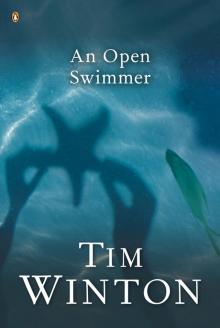 An Open Swimmer
An Open Swimmer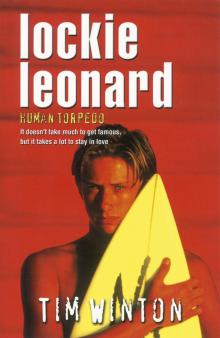 Human Torpedo
Human Torpedo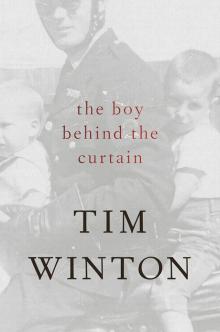 The Boy Behind the Curtain
The Boy Behind the Curtain Scission
Scission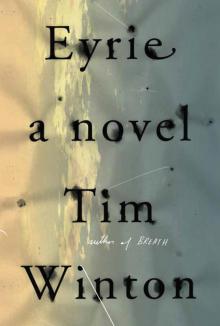 Eyrie
Eyrie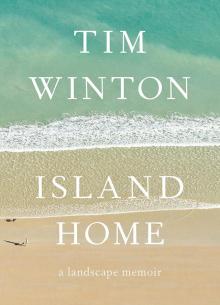 Island Home
Island Home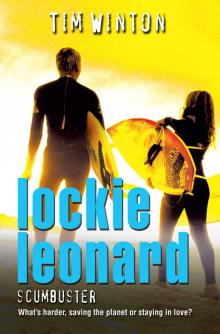 Scumbuster
Scumbuster The Turning
The Turning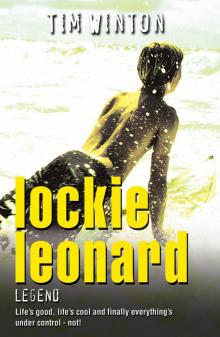 Legend
Legend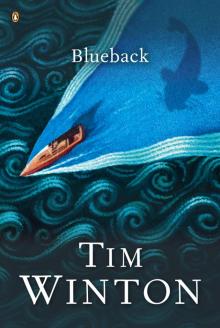 Blueback
Blueback Signs of Life
Signs of Life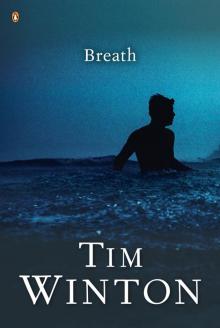 Breath
Breath Land's Edge
Land's Edge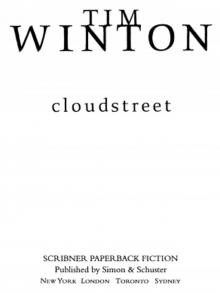 Cloudstreet
Cloudstreet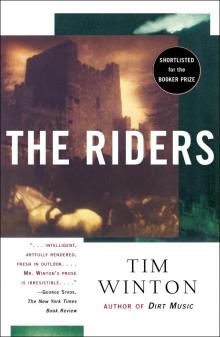 The Riders
The Riders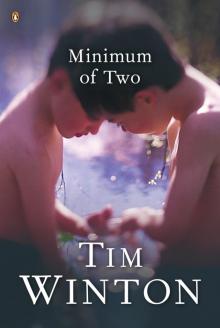 Minimum of Two
Minimum of Two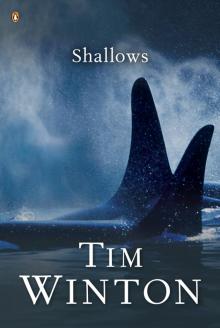 Shallows
Shallows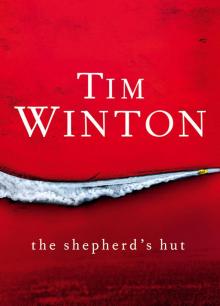 The Shepherd's Hut
The Shepherd's Hut In the Winter Dark
In the Winter Dark